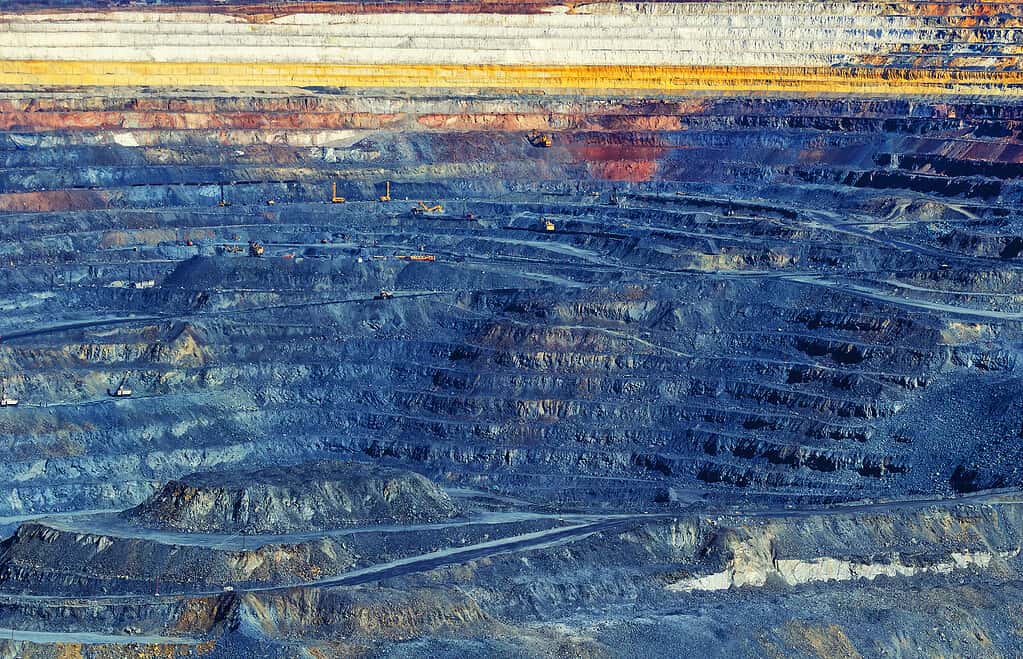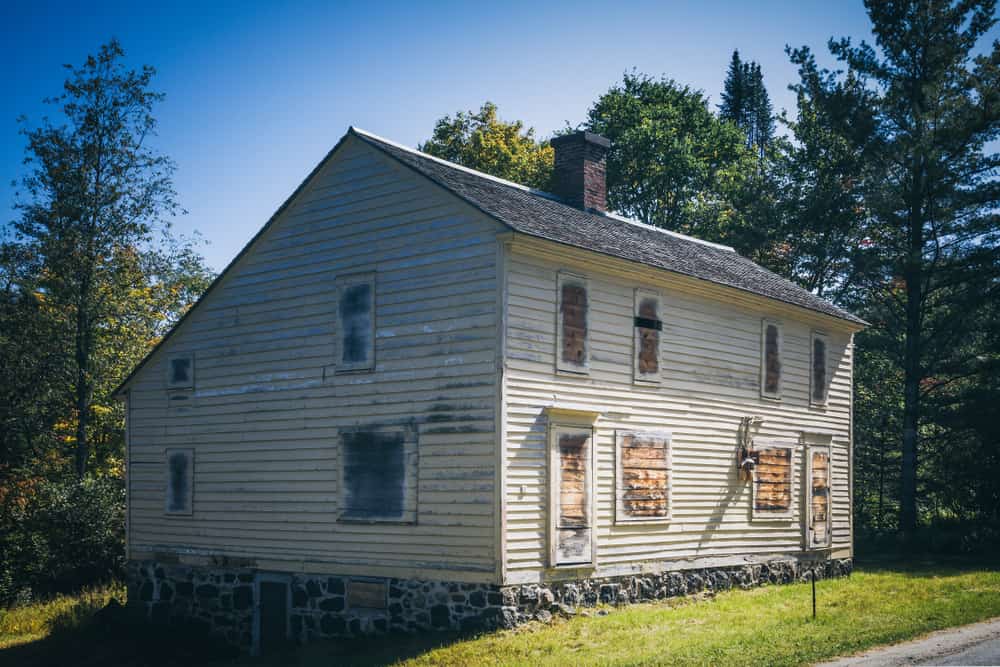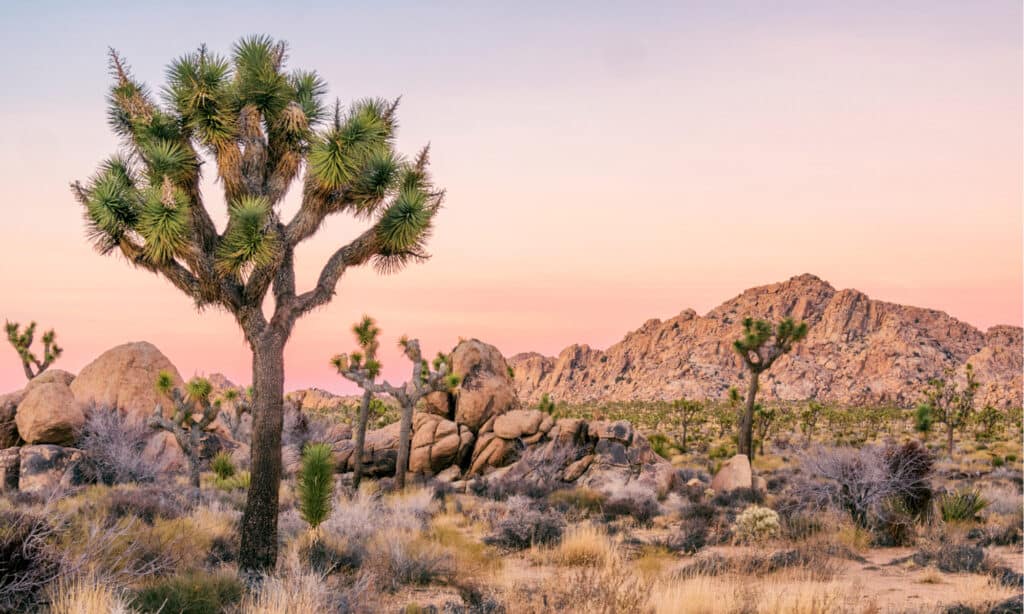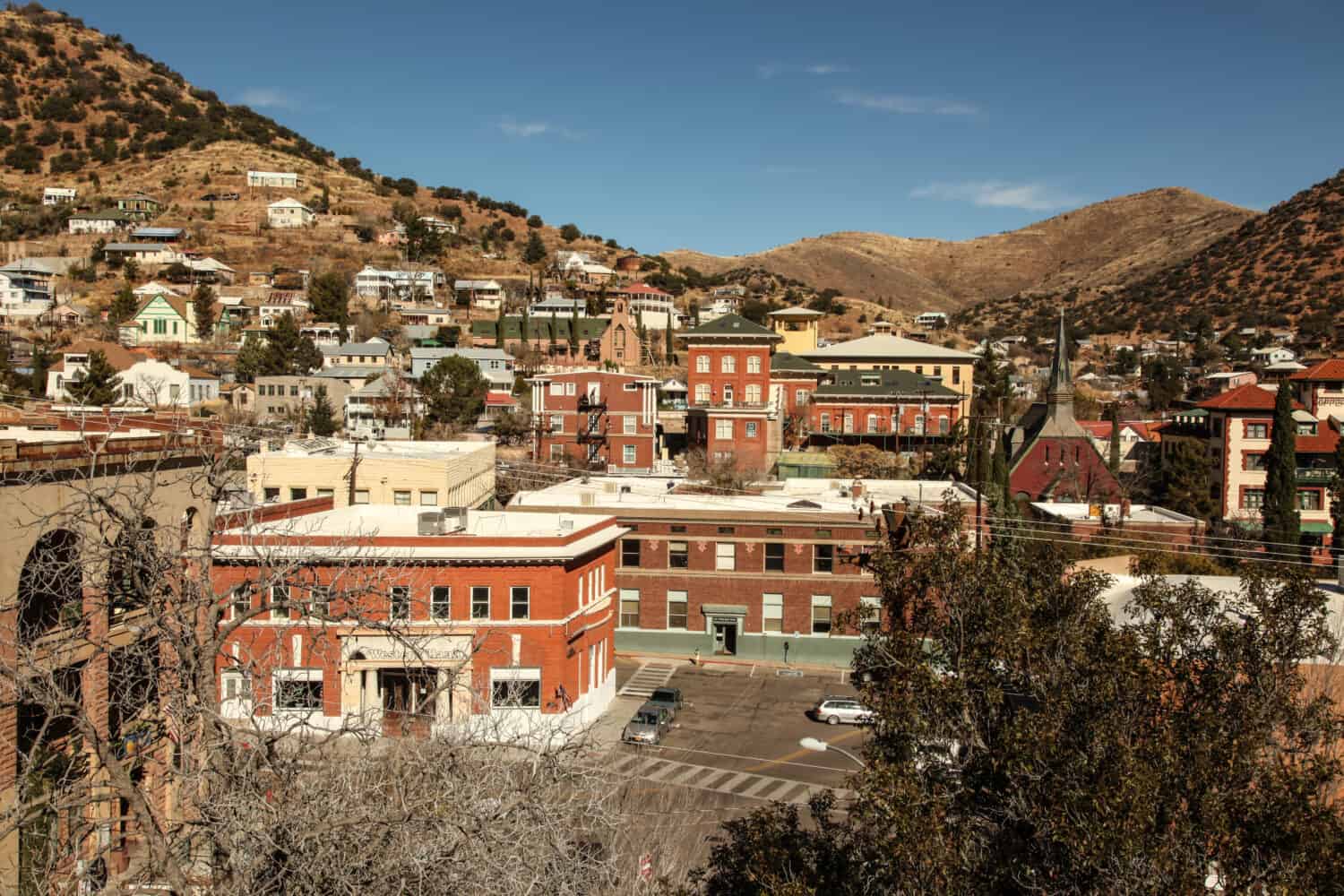
California’s largest ghost town used open-pit mining to gather iron.
©Vladimir_Timofeev/iStock via Getty Images
Once a bustling mining town, California’s largest ghost town is now nothing more than a series of abandoned buildings. This may sound like a familiar story, but it isn’t quite as common as you might expect. Sure, many mining towns ended up ghost towns after the gold and mining rush. But none went through quite as many trials and tribulations as the one this article will talk about below.
Keep reading to learn more about the largest ghost town in California, and what made it into the sad sight it is now.
What Are Ghost Towns?

Ghost towns are full of abandoned houses and commercial buildings.
©Philip Mowbray/Shutterstock.com
Ghost towns are what happens when a once-bustling town loses its residents. Most mining towns are the result of mining or mill towns falling apart.
When the mine starts to fail, people lose their jobs and have to move somewhere else to work. Since most jobs were only there because of the mine, there were no other places in the area to work. Before freelancing and working from home was an option, people had to move to follow money.
Most of these mining towns were very remote as well. The drive to the next town to find a job wasn’t practical at all. So people, unless determined or left with no other options, would leave in great waves.
This leads to what is known as a ghost town. The buildings are usually still standing, or at least the structures, to show that people once lived there, but there is little to no trace of a person.
Some states turn ghost towns into casino towns to bring people back in, such as Cripple Creek in Colorado. However, many more are just left to crumble to dust. In California, there are quite a few ghost towns left behind after mining grew less profitable.
The Largest Ghost Town in California
California’s largest ghost town is Eagle Mountain. It’s a remote town in the desert next to Joshua Tree National Park. The next closest major city is Palm Springs, which is about an hour and a half away.
Eagle Mountain stretches out over 10,000 acres and is almost completely surrounded by the national park. At one time, there were over 4,000 people, but now, no one lives in the area.
Kaiser Steel Corporation found the mine, and the town in 1948. This is the same company that went on to be a health maintenance organization still running today known as Kaiser Permanente. Around the time they opened the town, they were just starting to adopt their health policies.
Most of their focus was still on steel, though. The Eagle Mountain Mine offered plenty of iron. During its peak, the mine was breaking records for daily production levels.
A Bustling Town

Some ghost towns were small, but others were quite large.
©Kenzos/Shutterstock.com
Kaiser Corporation made Eagle Mountain to mine iron, but the town had so much more. For its 4,000 residents, there were over 400 homes, 200 trailers and space for trailers, and other boarding houses and dorms.
Everything that Kaiser Steel Corporation’s staff could need, they could get in Eagle Mountain. The area had a wide range of facilities including auditoriums, shopping centers, parks, swimming pools, gas stations, schools, churches, tennis courts, and baseball fields.
Not only was it a bustling mining town with a close-knit community, but the area drew in tourists who wanted to see the mine and the local desert.
Turning Into a Ghost Town
Things started to take a turn for the worse for Eagle Mountain and its citizens in the 1970s. People grew more concerned about the environment, slowing down mining. There was also foreign competition with iron that slowed down iron production in the US, including in Eagle Mountain.
There was a temporary shutdown of Eagle Mountain’s mines in 1980 that ran from summer to the start of fall. Out of the original 4,000 people, only 750 came back. A year later, in November 1981, Kaiser announced that the mine was shutting down.
Layoffs started around the same time. Eagle Mountain’s grocery store shut down in 1982. The last official graduating class of Eagle Mountain High School finished their high school careers in June 1983. After the class graduated, the rest of the town shut down. The post office, mine, and mill all closed by the end of that year.
All things considered, Eagle Mountain is a relatively new ghost town. Most ghost towns in the state came about in the 1800s, so it was rather unexpected to have such a bustling community reach its peak and shut down in less than 40 years.
Not the Same Old Story
Eagle Mountain in California sounds like the same fate met it as every other ghost town. Mining came to the remote town, was eventually stopped, and then people left. On the surface, that is the case. But under the surface, there is much more to this story.
A Jail
Just a few years after the town shut down, the California Department of Corrections discussed putting a prison in the area. In 1988, what once was the shopping center became Eagle Mountain Community Correctional Facility.
The jail lasted quite a while, making it until 2003, when state budgets mixed with a fatal riot led to the prison shutting down.
A Landfill
A jail wasn’t the only way California thought to use Eagle Mountain once it became a ghost town. In 1988, two trash companies thought that the perfect use of the large open pit mine, stretching over a mile-and-a-half long by a half-mile wide, would be a landfill.
There were some problems with the initial proposal. It wasn’t until 1992 that the EPA approved the project and progress started on turning the area into a landfill. Kaiser Ventures and the Los Angeles Sanitation District agreed to turn the area into a landfill in 2000.
Unfortunately, for Kaiser Ventures, the waste business faced some large changes in 2000. People started recycling more, and they threw out less trash. This meant that the demand for a new landfill wasn’t as high.
The project then stagnated. Before the deal was ever complete, the Sanitation District canceled their plans to turn the mine into a landfill. They dropped the deal in May 2013.
Filming
The crumbling ghost town became a popular spot for many photographers and video enthusiasts. The steel frames that were once Eagle Mountain became backdrops for movies, songs, and even destination spots for YouTubers.
A Hydroelectricity Plant
Kaiser Ventures, now under the name CIL&D, still tried to sell the land after 2013. Eagle Crest Energy and CIL&D discussed in 2015 the potential of creating a hydroelectric plant in the area.
There was a lot of support for the idea, but also a lot of criticism. While it would have been a more renewable energy, the plant would be close to Joshua Tree National Park. Many people worried that it could cause harm to the local wildlife in the area. Even Joshua Tree National Park officials grew concerned about the idea of building the plant and what it could mean for the surrounding area.
Since the company needed to use a lot of water to power the plant, the biggest concern was that the hydroelectric plant would harm the quality of water in the area. There was also mention that the company planned to use well water to fill the lakes they needed to power the plant. This led to concerns that the groundwater in the area would be negatively affected.
Nothing really came about from this plan and the whole idea stagnated for the next several years. The people who had lived in the area and witnessed the growth and decline of the mine were not very surprised. The community seemed to fragment after the shutdown of the mine, and people struggled to come to agreements on a purpose for the land.
Many said that the area would do best just being included in Joshua Tree, since it’s almost surrounded by the National Park. Eagle Mountain’s local government, landowner, and townspeople are still searching for a use for Eagle Mountain.
The Future of Eagle Mountain

Most of the land surrounding Eagle Mountain is desert.
©Dennis Silvas/Shutterstock.com
In 2023, there came a new purpose for the land. Unfortunately, only one group knows what that plan is. Ecology Mountain Holdings bought the 10,000 acres of land on April 17th, 2023, for $22.5 million.
The company has yet to release any information about what their plan is. Some people dug further into the company but found almost nothing. The only public information about the group is that it shares an address with a trucking company known as Ecology Auto Parts. Some people have also sighted red trucks in the area.
Thank you for reading! Have some feedback for us? Contact the AZ Animals editorial team.








